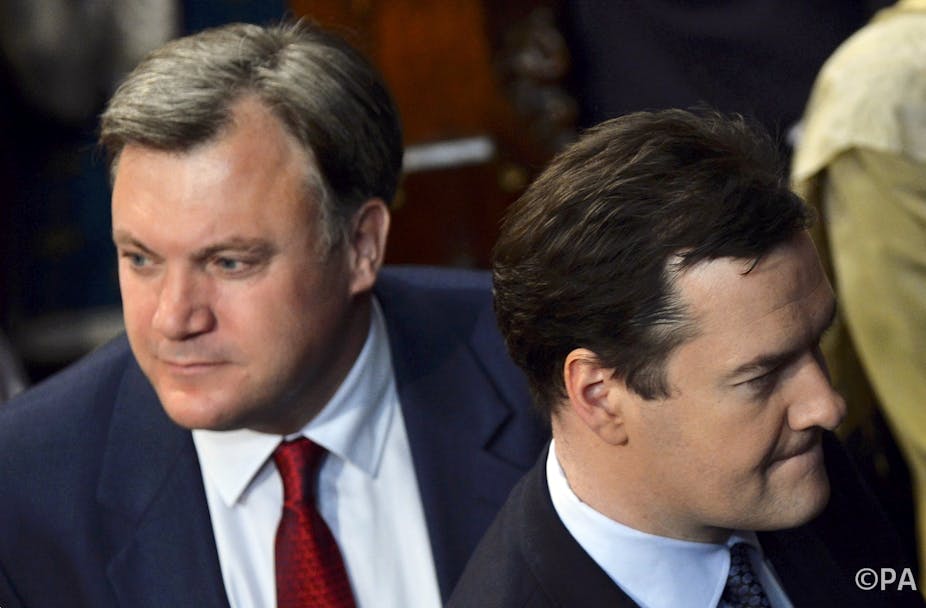Those of us that follow the mainstream media encounter information but few genuine insights. Recently one jumped off the page at me in a Financial Times piece. In an otherwise undistinguished endorsement of budget cutting, the article tells us that: “the next election is again set to be dominated by austerity”, but that: “this is not the impression anyone would receive from listening to recent political rhetoric”.
I would state the insight in a different way: “at the next election most voters will find themselves forced to endorse further and unnecessary cuts in public services”. I use the qualifier “most” because those few voters who find a Green candidate on the ballot will have the opportunity to vote anti-austerity (though I doubt many will seize this opportunity outside of Caroline Lucas’s Brighton Pavilion constituency).
Reducing the size of the public sector represents the central ideological goal of the current leadership of the Conservative Party. The Liberal Democrat reversal of its opposition to cuts in its pre-Coalition days we might attribute to opportunism. How balancing the fiscal budget became the accepted dogma of the Labour Party remains a mystery.
The differences among these three parties on eliminating the fiscal deficit are trivial – how quickly and what to cut. In his speech to the Fabian Society on 25 January 2014, shadow chancellor Ed Balls committed Labour to a budget surplus. While asserting that Labour policies would by some unspecified mechanism be more growth generating than those of the Coalition, he set the record straight on Labour and cuts, saying:
Without fiscal discipline and a credible commitment to eliminate the deficit, we cannot achieve the stability we need … Labour will combine iron discipline on spending control and action on growth with a fairer approach to deficit reduction. That means facing up to the tough choices that are necessary if we are to take a fairer approach to deficit reduction.
Ten months later he repeated this position in spades in a shadow cabinet meeting: “the shadow chancellor bluntly warned colleagues that even under a Labour government there would have to be serious cuts”, perhaps referring to the Coalition’s £30 billion “hit list” being drawn up in the treasury.
It is worth reflecting on where the next government would find £30 billion to cut. A few numbers make the answer obvious. Excluding interest on the public debt, social support (“welfare”), health, education and pensions account for more than 75% of government expenditure. The “tough choices” Balls has in mind are among benefit cuts for those already in or near poverty, an under-funded NHS, over-crowded schools or lower pensions (or all of the foregoing).
Why are these “tough choices” necessary? The simple answer is, they are not. They might be called “tough choices by the party of the ideologically willing”. To understand why “serious cuts” (“criminally frivolous” would be the more appropriate adjectives to use) are unnecessary, have a look at Chancellor Osborne’s record since May 2010.
When the new chancellor moved into Number 11, the UK public debt was £974 billion (63% of GDP), and at the end of this September, four years and five months later, the debt was £1451 billion (80% of GDP). This increase of £475 billion exceeded the so-called ballooning of debt under Gordon Brown. During Brown’s star-crossed period as prime minister, through a massive recession, the public debt rose by £440 billion (all in the chart below, numbers from the Office for National Statistics). Chancellor Osborne beat this with billions to spare.

The chancellor can boast of piling on more debt during his years of “sound fiscal policy” and much-touted recovery that Brown did during an economic collapse. With this in mind, it comes as no surprise to see in the next chart that his budget cuts have proved singularly incapable of reducing public sector net borrowing (aka, the “deficit”, from the same ONS source).
As the recession contracted the UK economy during 2008-2009, government borrowing rose continuously. This was because when household incomes and company profits declined, tax revenue followed them down. At the same time unemployment payments increased as the number of people out of work more than doubled. Gordon Brown also introduced a fiscal stimulus. Together this increased expenditure stopped the rise in public borrowing in late 2009.

Increased spending stopped borrowing from rising, because that spending arrested the fall in the economy that had created the need for more borrowing (economy declines, tax revenue falls; it works the other way, too). From May 2010 to April 2011, the annual equivalent monthly deficit included the holder-over reductions from Mr Brown’s government, and borrowing continued to fall.
Chancellor Osborne has been incapable of bringing borrowing down. This is because his expenditure cuts undermine growth. Slow growth means slow revenue recovery, which even the Chancellor has bemoaned.
As for Ed Ball’s bold commitment to a budget surplus and the serious cuts to bring it about, the response is simple. George tried that and it does not work.

